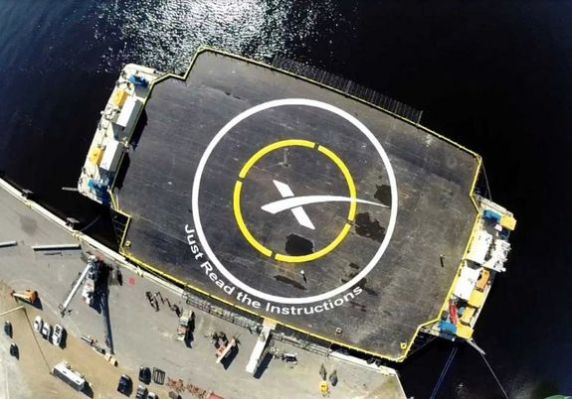Tomorrow at 10:42 AM PST SpaceX is scheduled to launch the Jason-3 satellite into orbit from Vandenberg Air Force Base in California. For many, it will be what happens after the launch that’s most important. Shortly after liftoff, SpaceX will make another attempt to land the first stage of its Falcon 9 rocket, this time on a floating drone ship in the ocean.
Back in December, SpaceX successfully landed the Falcon9 first stage on a landing pad at Cape Canaveral in Florida. It was considered an important milestone in the space industry and a big step toward making rockets reusable.
On Friday, SpaceX performed a static fire test on the recovered engines from that launch. SpaceX CEO Elon Musk tweeted that the data from the test looked good, but that one of the outer engines showed thrust fluctuations, possibly due to debris ingestion.
Maybe some debris ingestion. Engine data looks ok. Will borescope tonight. This is one of the outer engines.
— Elon Musk (@elonmusk) January 16, 2016
For tomorrow’s launch, SpaceX will attempt a more difficult landing on a drone ship floating in the ocean. Softly landing an unstable rocket is difficult enough without having to navigate it to a small target that can be rocked during ocean turbulence.
SpaceX has unsuccessfully tried to land its Falcon 9 first stage on a drone ship twice before. The first attempt, made in January of 2015, failed because the booster ran out of hydraulic fluid required to direct its descent. The second attempt, made in April of 2015, was closer but ultimately failed when a control valve stopped responding to commands seconds before touchdown.
At a press conference on Friday, SpaceX vice president of mission assurance Hans Koenigsmann was asked why it decided to switch up the landing location. Koenigsmann noted that SpaceX was not given environmental approval to bring the rocket back to land near Vandenberg Air Force Base in time for launch. He said, however, that it was certainly something it would like to do in the future.
Sunday will mark the last launch of the company’s Falcon 9 v1.1 generation of boosters. SpaceX now has an upgraded version of the rocket with increased thrust capabilities which was used in the successful December flight from Florida.
Koenigsmann emphasized that the decision to land on the drone ship had nothing to do with the capabilities of the Falcon 9 v1.1. He said that it “could absolutely land back on land without any issues. It’s not anything technical in this case.”
Unfortunately, live video of the landing attempt is not likely to be provided this time around. Because the landing will be attempted out in the ocean, it will be difficult for SpaceX to maintain a constant internet connection.
Of course the primary mission of this flight is not the landing, but a successful launch of the $180 million Jason-3 satellite. A NOAA and NASA project, the Jason-3 is the newest member in a series of Earth-observing satellites designed to provide worldwide observations of global sea levels.
Even so, after two failed drone ship rocket landings and one successful land-based recovery under its belt, all eyes will be on SpaceX and its drone ship Sunday morning .
